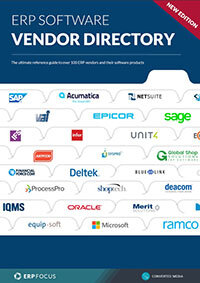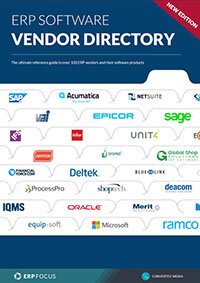ERP in Manufacturing Series: Transactional Reporting
One of the easiest – and most dangerous – assumptions you can make is that transactional reporting on the shop floor will be done timely and accurately. The best predictor of transactional effectiveness after ERP go-live is the current level of transactional effectiveness. If you currently have mediocre to no transactional reporting discipline, then go overboard in preparation for your transition to ERP – in training, in post implementation support, and in automation routines.
ERP & Accurate Production Reporting
The danger alluded to earlier is that every benefit that the C-level is expecting to attain as a result of an ERP implementation – better business information, financial control, and performance – depends on accurate production reporting. In a legacy world, if an operation didn’t keep the computerized inventory accurate, it was the path of least resistance for production control to simply circulate with a clipboard and take a manual inventory. In ERP, production reporting is linked directly to finance, supply chain, and distribution, and when production reporting is inaccurate, real inventory variances are created and posted to the income statement; internal work orders remain open and on the schedule for weeks beyond their expected close date; and customer orders cannot be advanced through the plant. The final danger with inaccurate production reporting is that it takes five times longer to correct a production reporting error than it does to report production; all of that integration has to be undone, one step at a time.
In order to mitigate these risks, it is important to put yourself in the manufacturing mindset, and understand their perspective. First and foremost, it will take a long time – if ever – before they realize how important feeding accurate information to a computer system is. Most manufacturers will consider cost, safety, product quality, inventory control, and process improvement all to be of significantly more importance than production reporting. If your ERP implementation plan depends on the threat of negative feedback to coerce production reporting performance, you are in for a very rude awakening. There is always something going wrong in manufacturing, and production reporting will almost always be the last priority.
Simplicity Works
Lastly, keep in mind that you are counting on system accuracy from some of the lowest-paid people in the entire operation, and that there is a correlation between pay rate and education. This does not make them bad, or not conscientious, or not trainable. You just need to be realistic about the degree of system sophistication you expect them to learn on their own.
All is not doom or gloom. The dangers listed in the paragraphs above can be largely mitigated. Automate transactions. Do not incorporate a complicated structure of choices into your ERP design. Aim for what is intuitive, so that a new, untrained person on the job has a possibility of figuring it out. And lastly, fight for minimal transactions, even though you will be told more are needed for inventory control. Assume that things will go wrong in manufacturing, and your solution will be much more practical and robust.
Free white paper

ERP Software Vendor Directory
Put the most comprehensive ERP vendor directory on your desk today

Related articles
-

ERP in Manufacturing Series: Purchasing
ERP can have a profound effect on purchasing best practice within a manufacturing organisation.
-

Secret KPI: Why Your ERP Implementation Team Matters More Than Software
Learn how Godlan ensures successful ERP implementation for manufacturers with proven strategies &...

